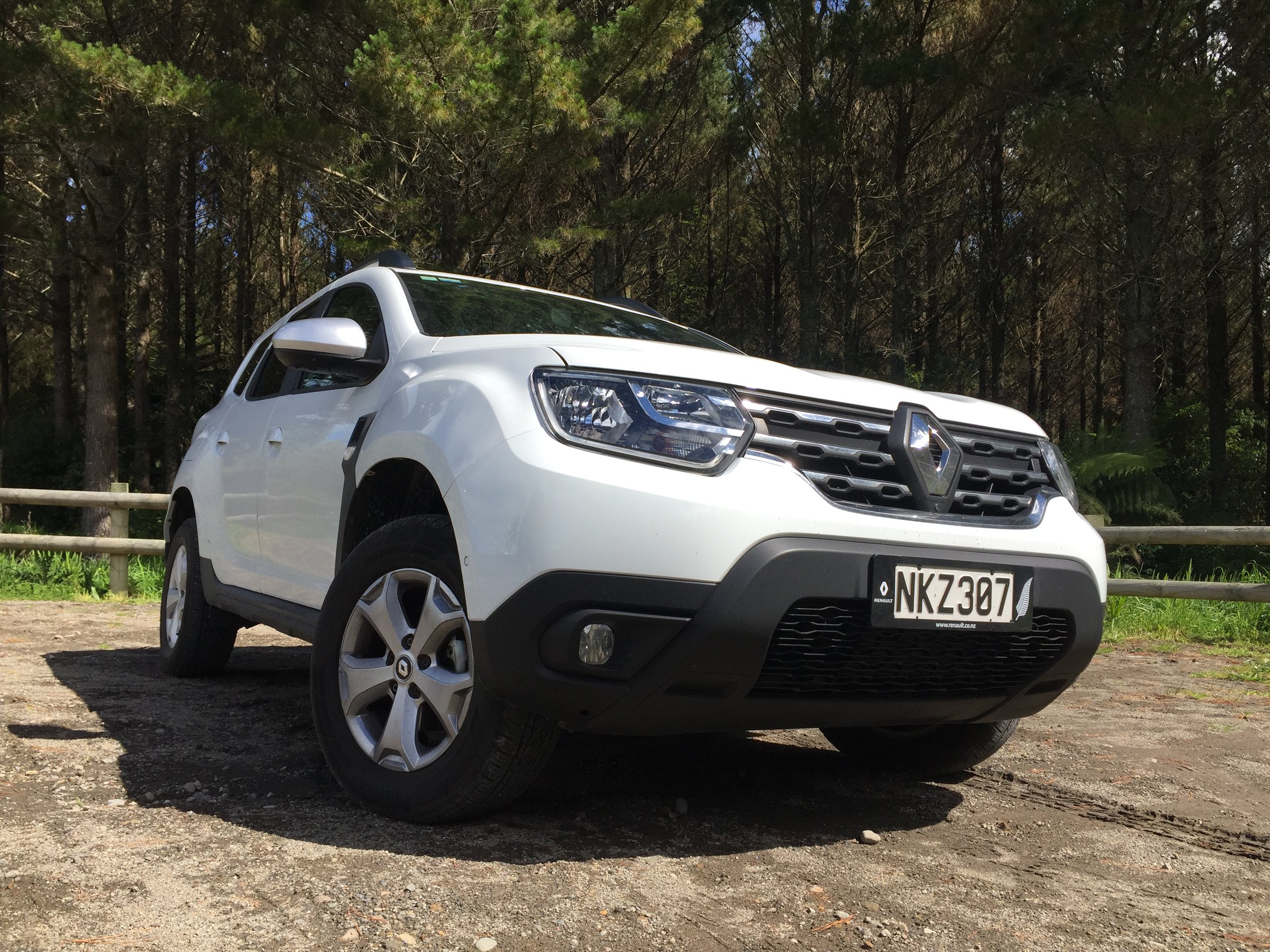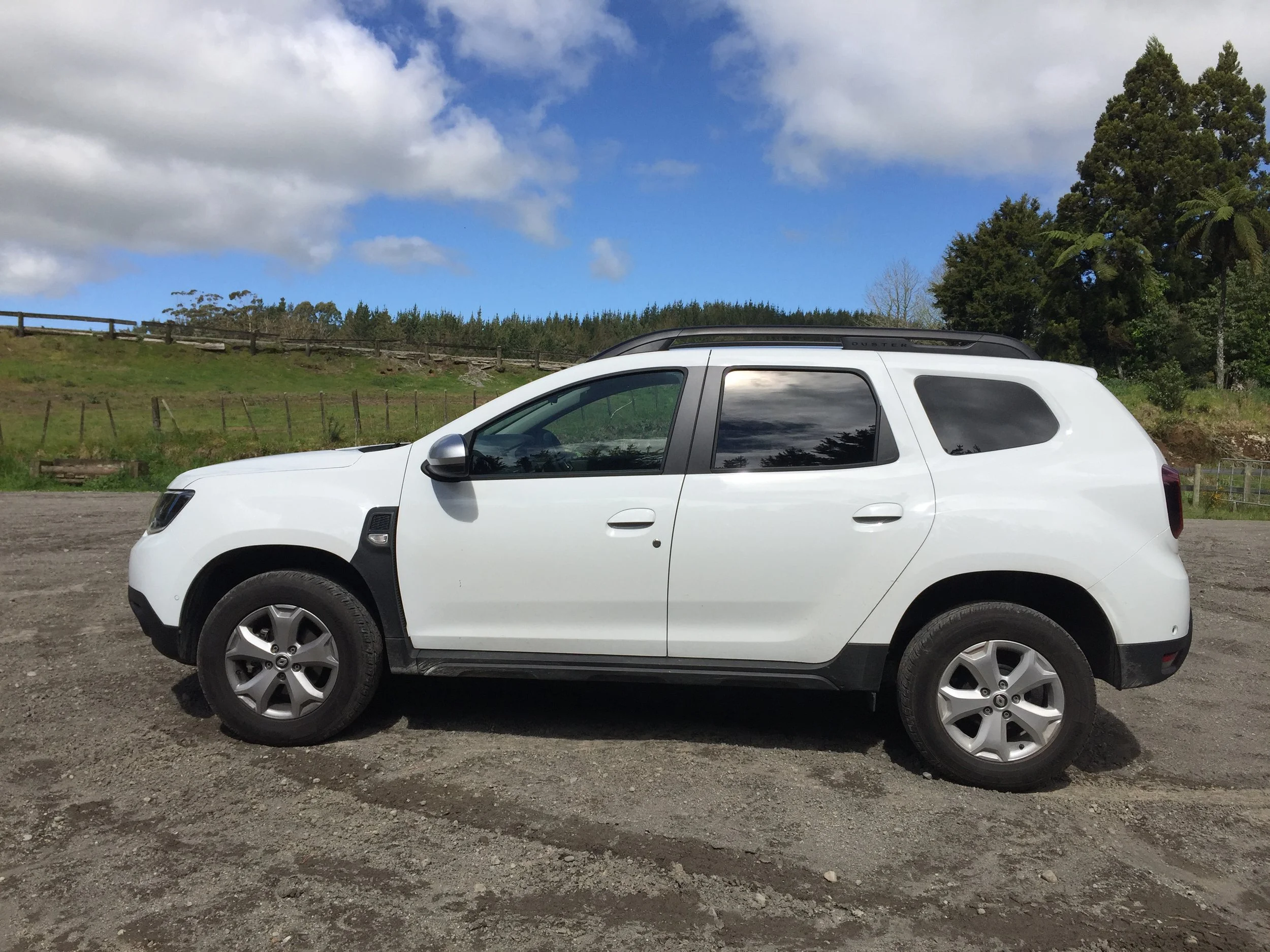Renault Duster review: Not too dusty
/All you possibly ever needed to know about this car’s Romanian maker. Something about how it coped with a tough-as state highway, too.
Price: $29,990
Powertrain and economy: 1.6-litre four cylinder petrol engine, 84kW at 5500rpm, 156Nm at 4000rpm; CVT automatic transmission; official economy 6.9 L/100km combined.
Vital statistics: 4341mm long, 1693mm high, 1804mm wide, 2676mm wheelbase; luggage space 448-1478 litres.
Like: Feels somewhat unbreakable, plenty of interior room for a small SUV, French ride and handling, high level of safety specification for the price.
Don’t like: Some unusual design elements, hard plastics in the interior, the CVT.
SOME years ago, when visiting our daughter in the United Kingdom, I got the hots for a small sports utility selling there - the Dacia Duster.
Possibly part of my enthusiasm was because of the alliteration of the vehicle’s name (for example, I also took a shine to the Nissan Note), but mainly it was because the whole point of the Duster was for it to be as affordable as possible.
At that stage you could buy an entry model Duster in UK for less than $20,000. Mind you, at that level of specification there were wind-up windows, no air conditioning and not even a radio. But, because of its very low price it was very successful for its Romanian manufacturer, becoming the first Dacia to achieve more than 1 million sales.
Close to a decade later, the Duster continues to be one of Dacia’s biggest-selling vehicles as the car-maker closes in on a total of nine million worldwide sales. And one of its most recent markets is New Zealand, where it is now sold as a Renault.
Huh? Let’s go back a few years to establish the French connection.
During World War II the Romanians established a factory near the small village of Mioveni to build aircraft engines and equipment, and after the war the facility was used for many years to manufacture parts for trucks and tractors.
Then in the mid-1960s Romania decided to develop a national motor vehicle industry, and it called for tenders for a joint venture that would allow vehicles to be built under licence. France’s Renault won the tender, and in 1968 the first vehicle to emerge off the production line was the Renault R8 Major, rebranded the Dacia 1100.
The following year the Romanians began building the Renault 12 as the Dacia 1300, and this was followed by an estate version called Dacia 1300 Break, a ute called the Dacia 1302, and even a van called the Estafette.
In 1999, after 33 years, the Romanian government sold 51 percent of Dacia to Renault, with part of the acquisition an agreement that by 2004 a medium-sized and very affordable family sedan would be produced.
A year later a 1.4-litre five-door liftback called SupeRNova was launched, featuring a Renault powertrain. It did well too, with more than 60,000 of them sold by 2003.
But the Romanian brand really took off from 2004 when it launched a small sedan called Logan. It sold so well that not only did Dacia up the capacity of its assembly plant to 350,000 units a year, but it also prompted Renault to begin selling it firstly in western Europe, and then in other parts of the world.
Cumulative sales of Logan have now passed four million, and it is sold globally not only as a Dacia, but also as a Renault, Nissan, Mahindra and even as a Lada. It’s been offered as a people-mover, van and ute – and importantly, its platform was promptly used as a basis for development of two other Dacias; the Sandero hatch in 2008 and the Duster in 2010.
It’s all been a very successful venture for Renault and for Romania. Today, Dacia is Romania’s largest company by revenue, accounting for more than eight percent of the country’s total exports.
In the UK, a right-hand drive country like ours, Dacia product continues to be offered in various guises at very low prices. In fact, earlier this year the latest Sandero was claimed to be the country’s cheapest new car with retail prices a smidge over $15k. That’s since gone up to the equivalent of $18k, but it is still impressively inexpensive
And Duster? In the UK three models are available with Essential, Comfort and Prestige levels of specification, and with a choice of one bi-Fuel (LPG), two diesel and three petrol engines. Prices range from $26,995 through to $32,000.
All of which makes the $29,990 price of the single Duster model available in New Zealand quite appealing. That’s particularly so considering the high level of specification, particularly relating to safety, that our model carries.
Standard items include hill-start assist, a multi-view camera, tyre pressure monitor, blind-spot monitor, a Renault navigation system with a 7-inch screen (which is a bit small), Apple CarPlay and Android Auto capability, and rear privacy glass.
There’s also excellent interior room for an SUV with exterior dimensions smaller than, say, a Mitsubishi ASX. On the inside however there is good shoulder and leg room front and rear, and cargo room is 448 litres with all seats in use, growing to 1478 litres when the rear seats are folded down. That’s better than most.
Unfortunately the appeal of this Romanian SUV is let down by such things as over-use of hard plastics on the interior, strange positioning of the stereo’s remote controls on the steering column, too-small 16-inch wheels and tyres on the exterior, and an old-school continuously variable automatic that flares under acceleration.
The exterior design looks somewhat outdated as well. The rear flanks have small porthole-like windows, the tail-lights are a bit weird, and just aft of the front wheel arches are black plastic claddings that it seems are there purely for show.
But overall there’s a feeling with this Duster that it’s one of those vehicles that might be almost unbreakable, capable of withstanding quite the hammering. Which makes sense, considering the World Economic Forum ranks Romania in 120th place out of 137 countries regarding the quality of its roads. In a ranking that awards one point for extremely poor roads and seven points for extremely good, Romania gets a 2.7. By the way, New Zealand is ranked 40th with its 4.7 points.
So with that as background, I decided to use the Duster to take on what ranks as possibly New Zealand’s worst state highway – SH43, the dreaded Forgotten World Highway from Stratford to Taumarunui.
Tourism operators like to tout this route as wonderfully scenic and interesting, and it is – if you are brave enough to take your eyes off the road.
From the motoring perspective the reality is that the150km road itself is also not much more than a goat track, winding over three saddles, through a skinny tunnel, and beset by numerous slips and washouts. It also has a 12km unsealed portion through notorious Tangarakau Gorge, which gives SH43 the unfortunate honour of being the only unsealed state highway in the country.
The secret to driving the Forgotten World Highway is to take your time, and with the Duster it was certainly easy to do that. Its Renault-sourced 1.6-litre four cylinder engine develops a modest 84kW of power and 156Nm of torque, all of which has to be fed through that old-school CVT.
And I very quickly learnt to not even think about trying to save any fuel by choosing the Duster’s on-board Eco mode, because it reduced performance to laughably low levels as we negotiated hills, corners and lumpy road surfaces during the journey through the Republic of Whangamomona and beyond.
But you know, despite all these on-paper shortcomings the Duster did a great job in getting through to Taumarunui. It’s smallish exterior dimensions combined with its French underpinnings to provide very good ride and handling credentials.
We easily CVT-flared our way through the route, loping through the tough bits with ease – including through the unsealed section thanks to an unusually high 210mm ground clearance. Perfect for Romanian back-country conditions – and also perfect for the Forgotten World Highway.
I suppose you could say the entire experience wasn’t too dusty.
So I suppose it could also be said that I still have the hots for the Dacia Duster. Not for any particular reason – I just like the little SUV, that’s all. And I also think that Dacia has proved such a resounding success for its owner Renault that the Duster deserves to be sporting its home badging.
This might open the way for more Dacia product to be imported here, such as the Sandero and its SUV-ised sibling the Stepway, and the Oroch ute which is built off the Duster.
And here’s an interesting thing. As part of what Renault Group calls its ‘Renaulution’ strategy, it has this year formed a business unit that combines Dacia with the Russian brand Lada, which the French manufacturer also owns.
The plan now is for the business unit to use Dacia’s expertise to help develop a new Lada Niva.
Remember the last time we saw that vehicle? It was back in the early 1980s when the then Dairy Board imported them, apparently as payment for dairy exports. I recall road testing one just once – and writing that driving it was akin to taxi-ing a DC3.
An all-new Niva might be launched by 2024, and you can guarantee it will be much, much better than the original model. Would it be drawing too long a bow to imagine that such a vehicle might also be sold in New Zealand as a Renault?






















